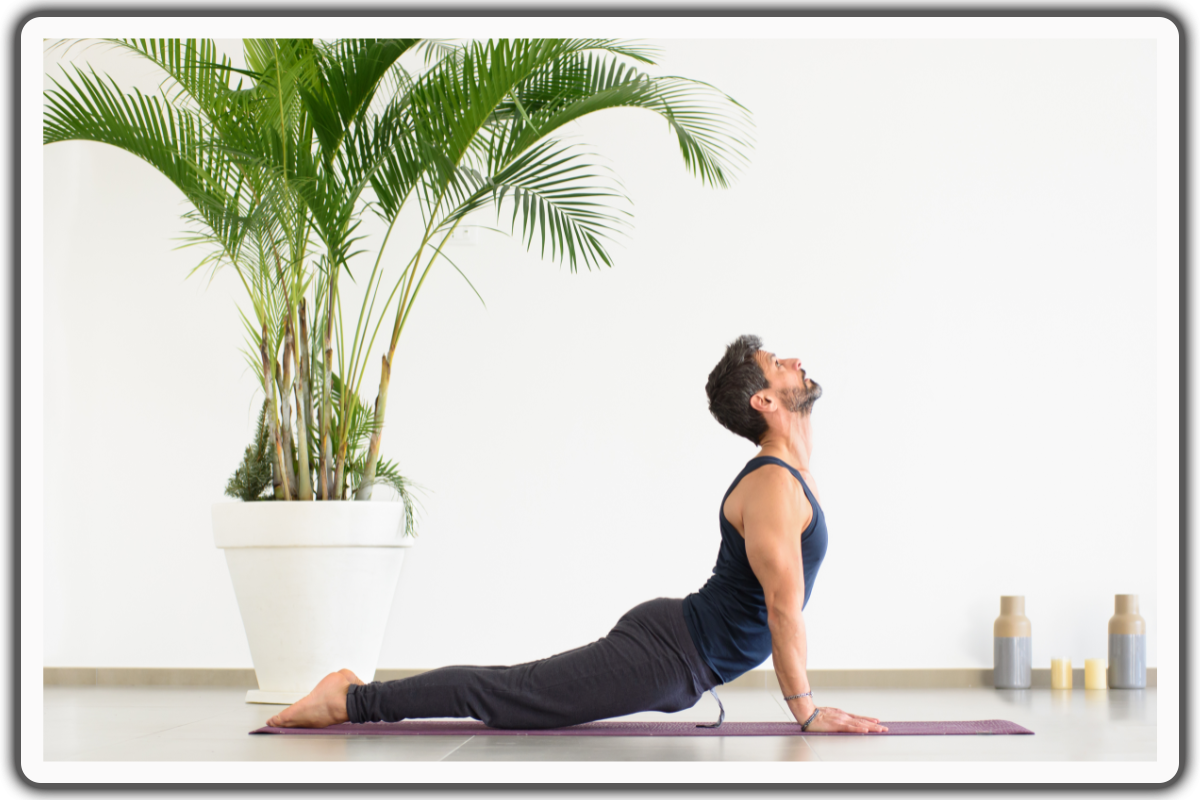
The Role of Chest-Opening Yoga in Preventing Chest Discomfort
Feeling chest pain or tightness can be alarming, but it's more common than you might think. Everyday stress, anxiety, or even indigestion can lead to these sensations.
While it's important not to ignore chest pain, especially if it's severe or persistent, most instances aren't linked to serious health issues. However, it's crucial to listen to your body.
Moreover, to help alleviate chest pain and tightness, consider trying chest-opening yoga or heart opening yoga poses. This practice not only improves posture and spinal alignment but also enhances breathing and lung capacity [⁴]. Additionally, it reduces stress and anxiety levels, relieves tension in the chest and shoulders, and promotes overall relaxation and well-being.
Hence, this article will guide you step-by-step through performing chest-opening yoga poses to release your chest pain and tightness, which can also reduce the likelihood of experiencing chest discomfort in the future.
Benefits of Chest Opening Yoga
1. Improves Posture and Spinal Alignment:
Engaging in chest opening poses or heart opening yoga poses in your yoga practice helps pull the shoulder blades back and align the spine, enhancing posture.
Additionally, by also expanding the rib cage and opening the chest, these poses enhance lung capacity and facilitate better breathing, which can be beneficial for people [¹] with asthma, chronic bronchitis, or even mild respiratory infections.
3. Reduce Stress and Anxiety Levels
Yoga is well-known for its calming effects on the mind. Additionally, chest opening poses can particularly relieve physical manifestations of stress and anxiety by encouraging deep breathing, which helps to calm the nervous system.
4. Relieves Chest and Shoulder Tension
These poses work to stretch and open the area around the chest, rib cage, and shoulder blades, easing tension in these regions. [²]
5. Promotes Overall Relaxation and Well-Being
By opening the chest and relaxing the shoulder blades, these yoga poses foster a deeper sense of relaxation and contribute to overall well-being.
The Routine
1. Progressive Exercises #1
A. Supported Reclined Butterfly Pose – Heart Opener
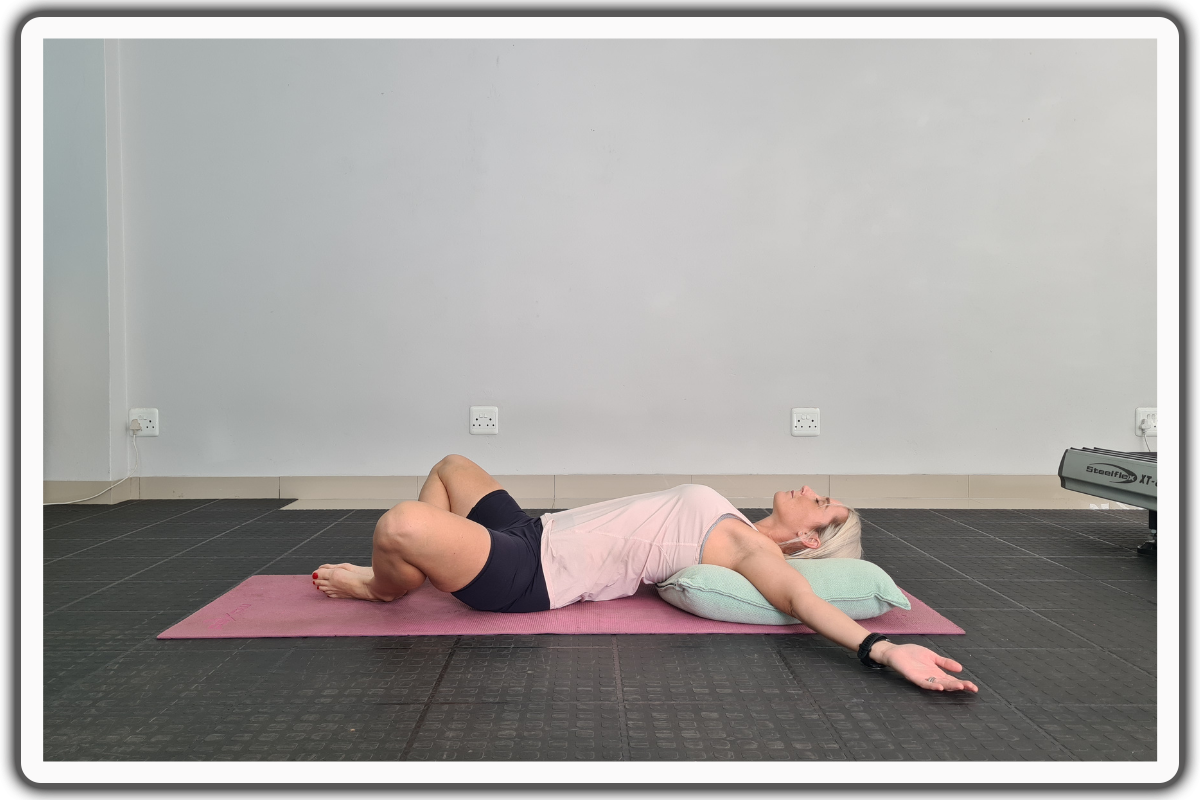
For this exercise, use a bolster, yoga block, cushion, or pillow that comfortably supports your upper body.
- Lie on your back on the floor with your knees bent and feet flat on the floor.
- Additionally, place the pillow under your upper body and rest your arms out to the sides at shoulder level with palms up. tighten your core then bring the soles of your feet together and open your knees out to the sides.
- Moreover, hold the position for 5 deep belly breaths, in through your nose and out through your mouth.
- To intensify this movement, inhale and slowly bring your arms overhead in wide arcs. Exhale and reverse the movement to lower your arms to the starting position.
- Additionally, repeat the movement, similar to a snow angel movement.
- Start with 1 set of 4 repetitions. Relax and return to the starting position.
- Props, such as a bolster or blanket, to support the back or hips allow for a comfortable and sustained stretch.
B. Prone Position
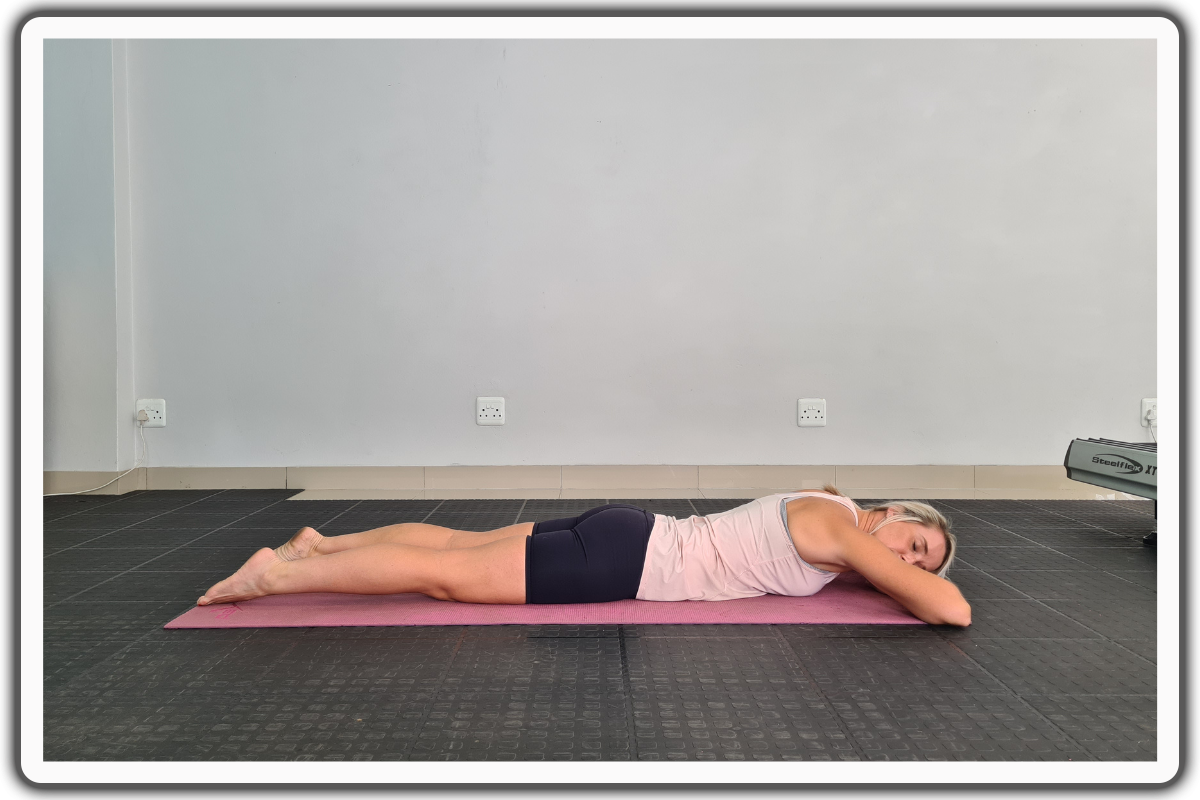
- Lie on your stomach with your feet hip-width apart, maintaining good alignment with your head, shoulders, hips, and legs.
- Additionally, bend your elbows out to the sides and turn your head to rest your cheek on top of your hands.
- Close your eyes and take deep belly breaths, in through your nose and out through your mouth, relaxing your upper body.
- Moreover, to make the exercise more comfortable, place a bolster or pillow underneath your belly for support if needed. Or, to make the exercise also more challenging, rock your hips from side to side to release tightness in the lower back area.
2. Sphynx Pose
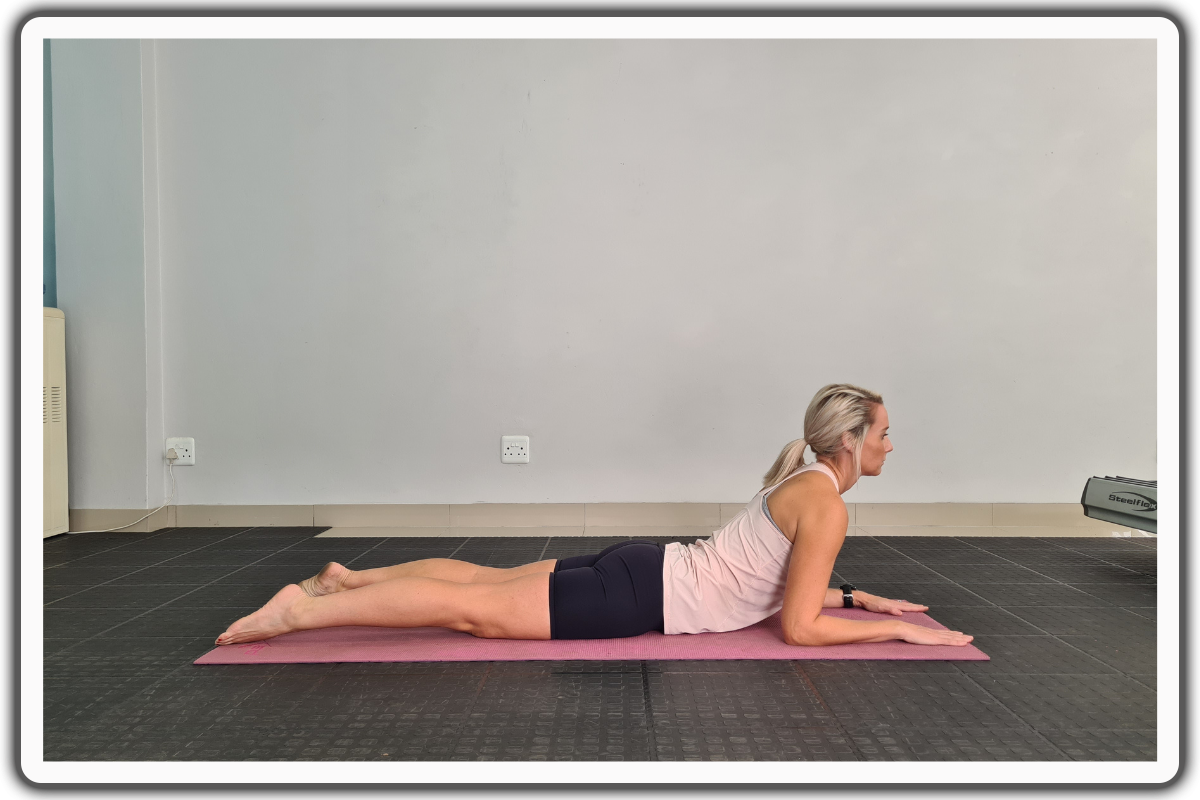
- From the Prone position, bring your elbows beneath your shoulders, with your fingers pointing toward the front.
- Press and arch your back, using your glutes and back muscle strength.
- To intensify the stretch, move your forearms closer toward you and slowly pull yourself forward to open up your chest.
- Additionally, keep your hips anchored into the mat. Hold this position for a couple of breaths, in through your nose and out through your mouth. Relax and return to the starting position.
- Moreover, repeat the Prone Position as often as you feel comfortable.
3. Spinal Twist
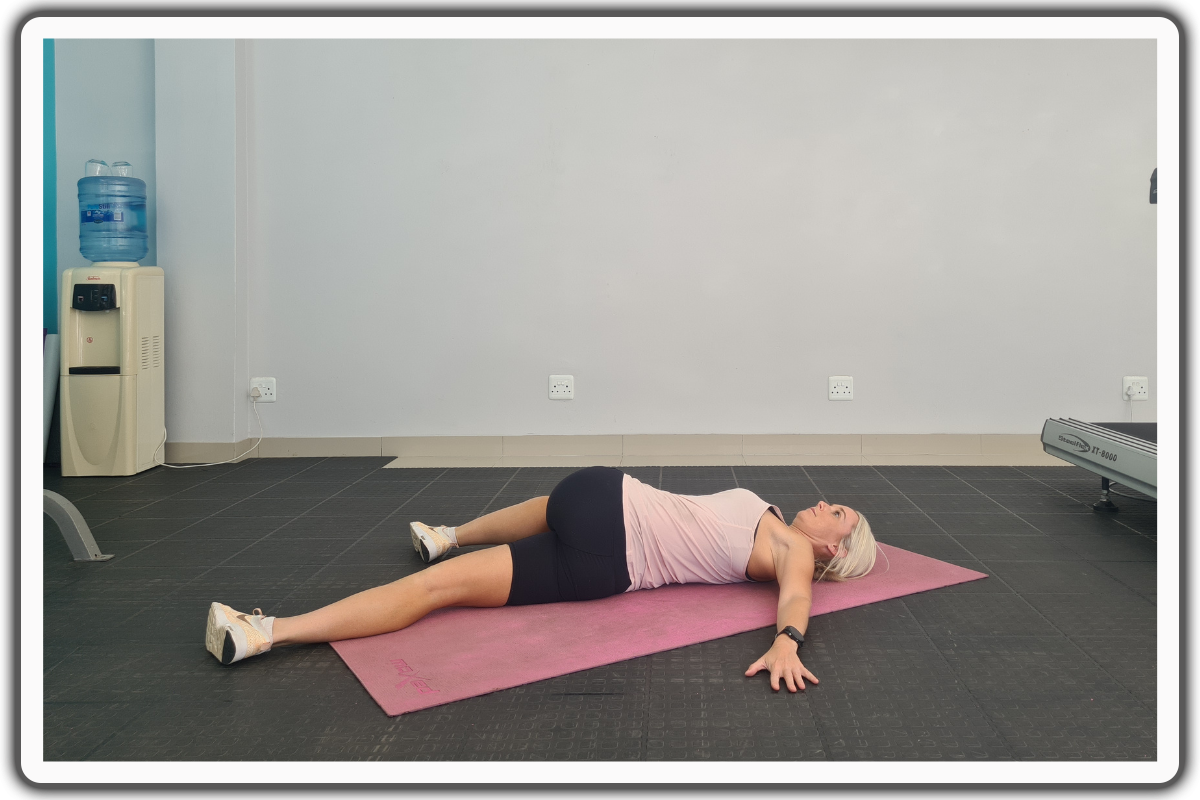
- Lie on your back with your knees bent and your feet flat on the floor.
- Additionally, extend your arms at your side, relaxing your upper body. Strengthen your right leg, then twist through the lower back pelvis and spine to bring your left leg across your body.
- Hold the position for several deep belly breaths, in through your nose and out through your mouth. Moreover, relax and repeat the movement on the opposite side.
4. Supported Child’s Pose
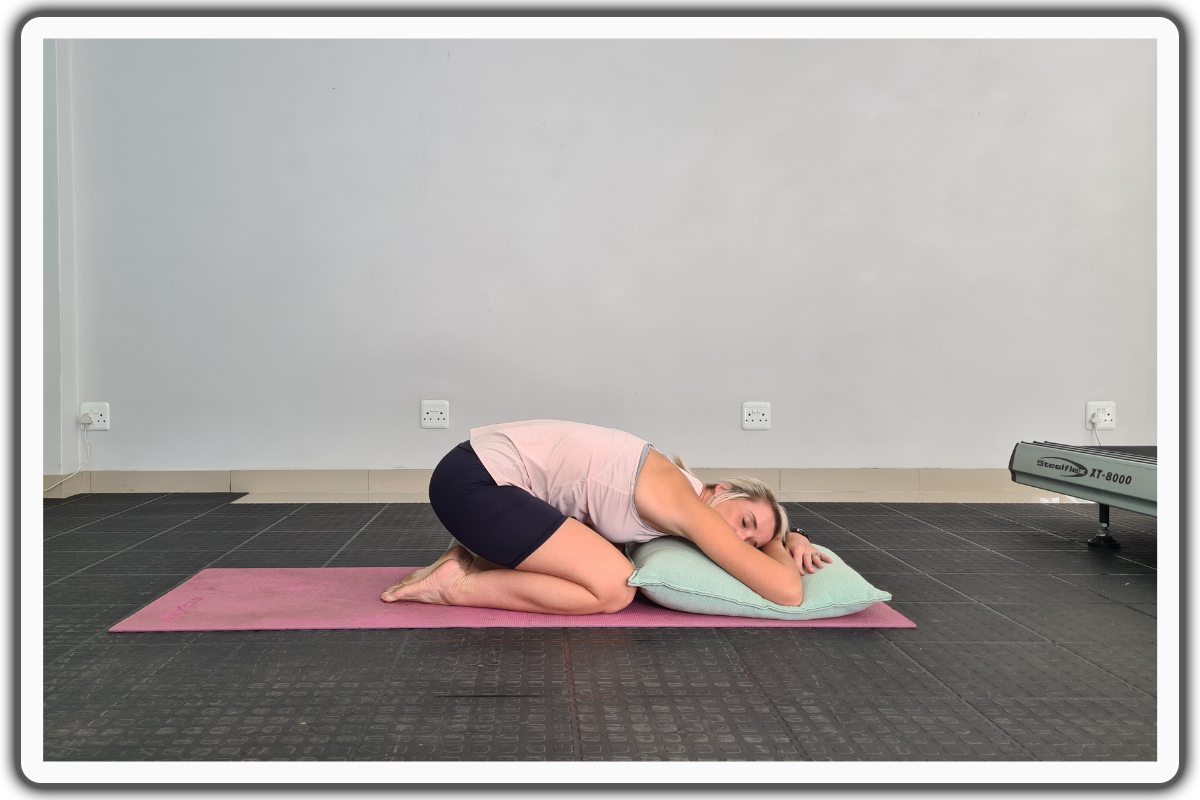
For this exercise, use a bolster or pillow to support your head.
- Begin in an upright kneeling position on the floor in front of the pillow with your knees wider than shoulder-width apart. Tighten your abdominal area.
- Additionally, shift your hips back to your feet and bring your elbows on the outside of the pillow, resting your one check on top of the pillow. Relax your midback area for a light stretch.
- Moreover, close your eyes and take several deep belly breaths, in through your nose and out through your mouth. Relax and turn to the opposite side as you repeat the movement.
5. Heart Opener
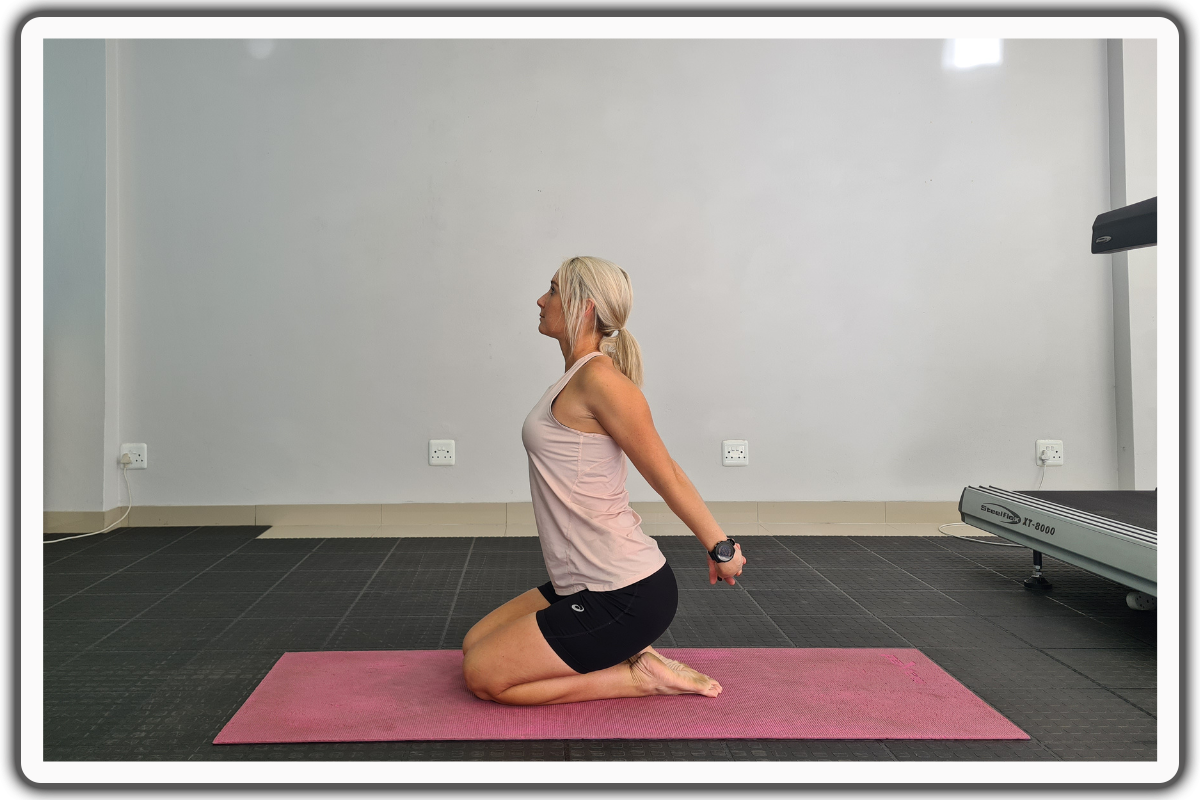
- Begin these heart opening yoga poses in an upright kneeling position on the floor with your knees and feet close together, maintaining good alignment with your head, shoulders, and hips.
- Additionally, shift your hips back to rest your seat on your feet. Interlace your fingers behind your back and engage your core.
- Moreover, press your joined hands down, look up, and hold this position for a few deep belly breaths, in through your nose and out through your mouth.
6. Camel Pose
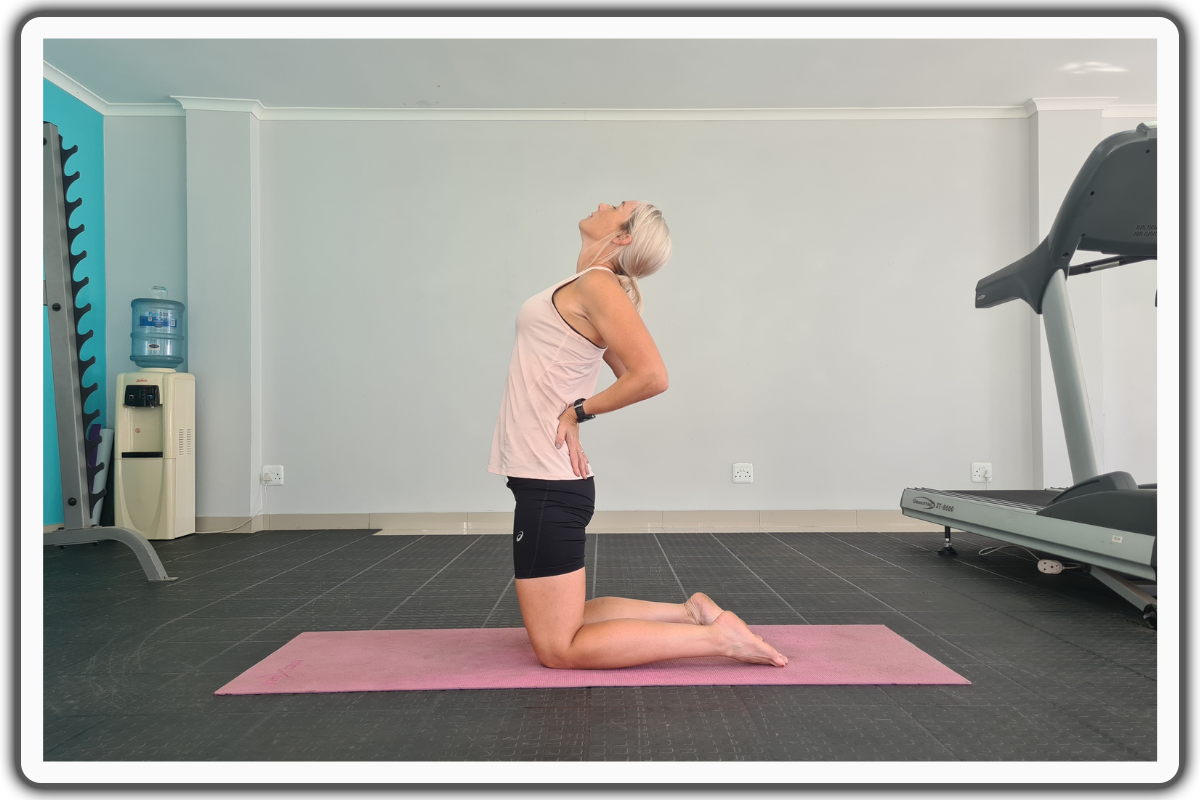
- Begin in an upright kneeling position on the floor with your feet close together, ensuring good alignment with your head, shoulders, hips, and knees.
- Place your hands at the back of your hips and engage your core.
- Additionally, push your hips forward to lean your upper body backward, ensuring they are aligned with your knees, and consciously open your upper chest with your gaze towards the ceiling.
- Moreover, hold the position for several deep belly breaths, in through your nose and out through your mouth. Relax and repeat the movement.
7. Extended Prayer with Breaths
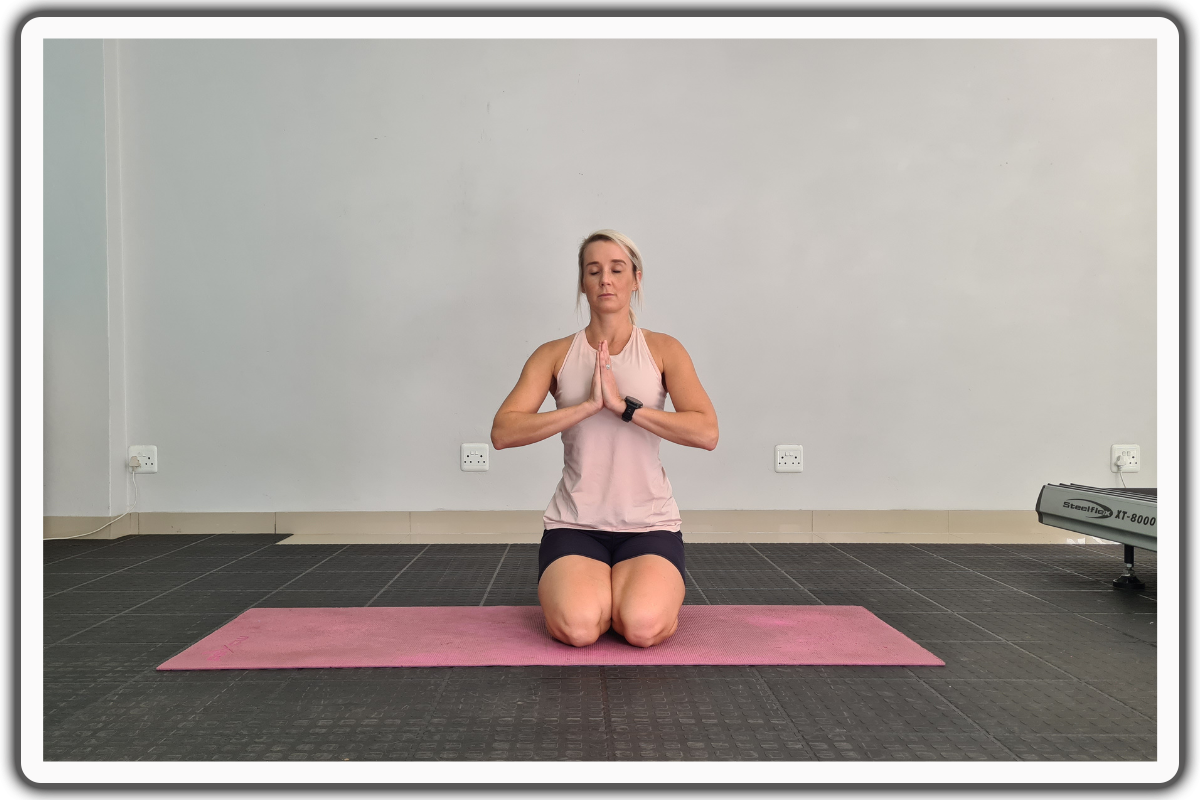
- Begin in an upright kneeling position on the floor with your knees and feet close together. Maintain good alignment with your upper body.
- Shift your hips back to your feet and tighten your abdominal area.
- Press your hands together at chest level then close your eyes.
- Hold the position for several seconds deep belly breaths in through your nose and out through your mouth.
- Moreover, start with 3 repetitions, moving with the rhythm of your breath. If closing your eyes is too challenging, go through this exercise with your eyes open and focus your gaze on an unmoving point or object.
Other Chest Opening Yoga Poses
1. Fish Pose
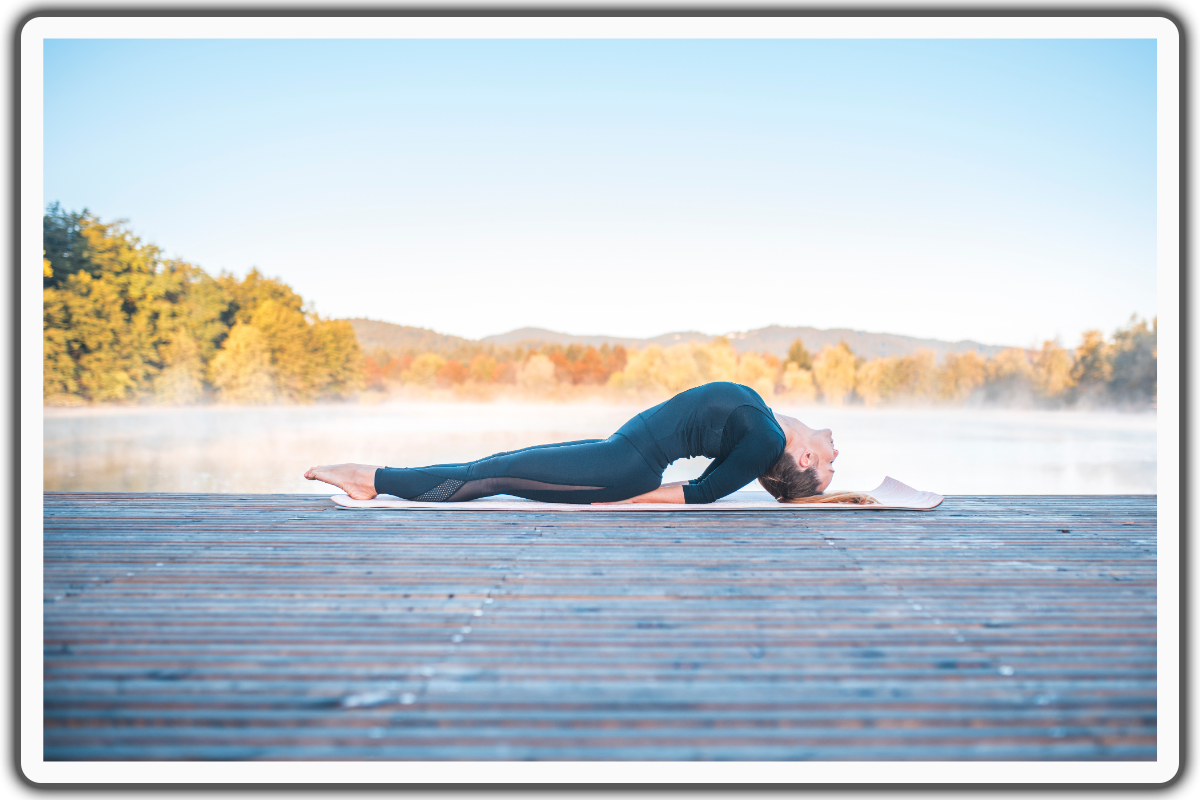
- Lie on your back on the floor with your legs straight and close together, maintaining good alignment with your head, shoulders, and hips.
- Place your arms at your side, palms down. Engage your core.
- Press your forearms and elbows into the floor and lift your chest to create an arch in your upper back.
- Lift your shoulder blades and upper torso off the floor. Tilt your head back and bring the crown of your head to the floor.
- Keep your lower body on the ground with your legs and hips pressed firmly on the floor. Hold the position for several deep belly breaths, in through your nose and out through your mouth.
- Moreover, to intensify this pose, place your weight on your hips and forearms. Pressing you’re your hips and forearms can deepen the pose and lift your chest higher.
2. Bow Pose
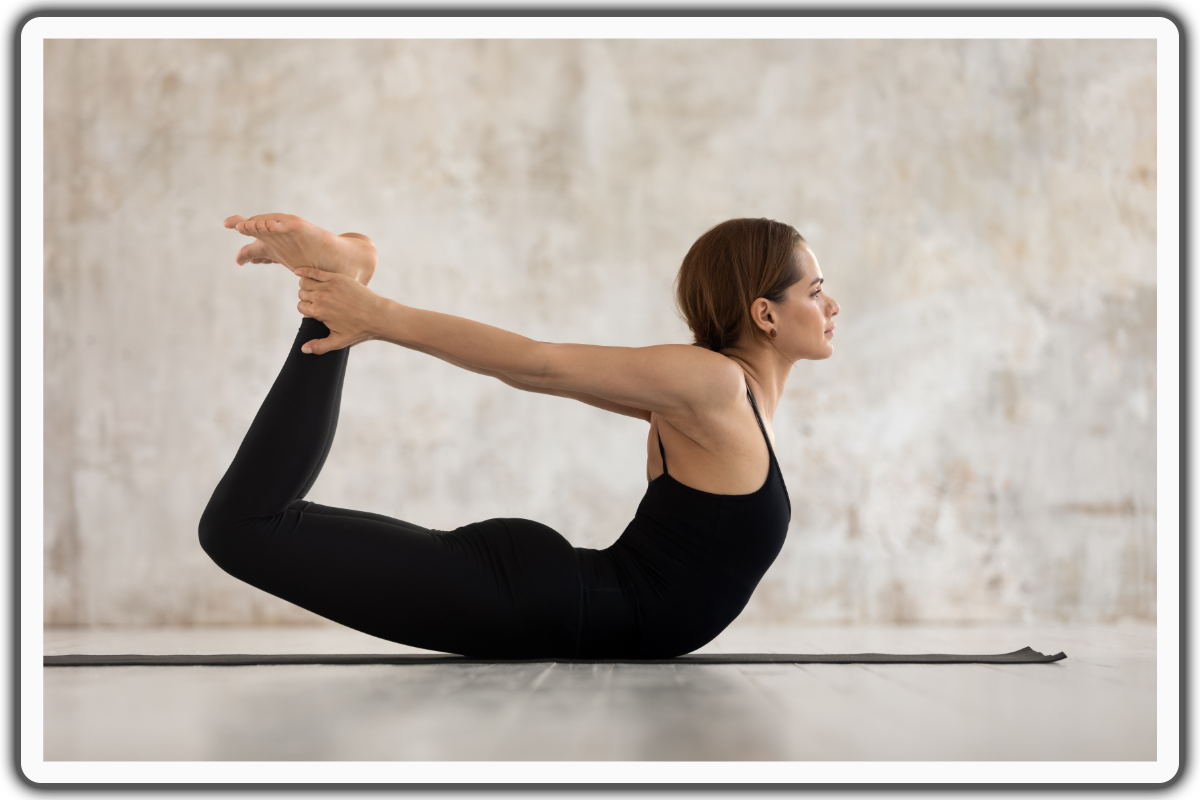
- Lie on your stomach on the floor with your feet shoulder-width apart, maintaining good alignment with your heart, shoulders, hips, and legs.
- Bend your knees to bring your heels close to your buttocks.
- Additionally, lift your upper body off the floor, reach back with both arms and hold your feet to intensify the stretch.
- Hold the position for several deep belly breaths, in through your nose and out through your mouth. Relax and return to the starting position.
3. Cow Face Arms
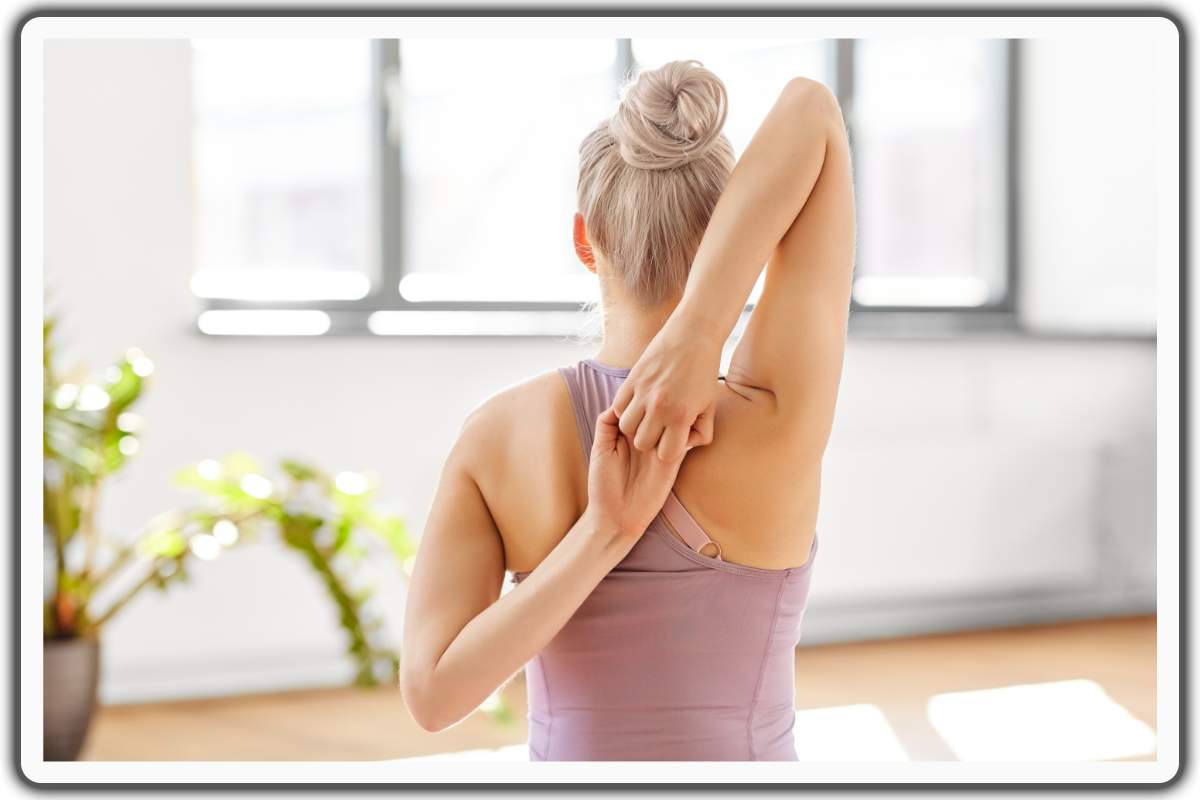
- Begin in an upright kneeling position on the floor with your knees and feet close together.
- Shift your hips back to rest your seat on your feet, while maintaining good alignment with your head, shoulders, and hips.
- Use one arm and reach your back, and use the other hand to pull it more towards the center.
- Clasp your fingers together if you can. Hold this position for several deep belly breaths, in through your nose and out through your mouth.
- Moreover, relax and change the position of your arms as you repeat the movement.
Conclusion
Taking proactive care in addressing heart and chest concerns is crucial for maintaining overall health and well-being. Additionally, the heart is central to the body's vascular system, and keeping it healthy can also prevent a multitude of serious conditions, including cardiovascular diseases, [³] which are leading causes of death worldwide.
Moreover, engaging in regular physical activity like yoga, especially heart opening yoga poses, can significantly improve cardiovascular function.
Proactive measures, such as engaging in regular physical activity like yoga, especially chest-opening poses, can significantly improve cardiovascular function. Additionally, these activities enhance lung capacity, promote better blood circulation, and reduce stress and anxiety, all of which are beneficial for heart health.
Additionally, proactive care can impact respiratory health and muscular balance by alleviating tension in the chest and shoulders and improving posture and spinal alignment. This is also not only contributes to physical comfort but also improves overall body function and quality of life.
In essence, taking steps to manage and prevent chest and heart issues before they become severe is an essential strategy for living a healthier, more active life. Furthermore, incorporating heart opening yoga poses into your routine can also help alleviate tension, improve posture, and promote overall well-being, contributing to a healthier lifestyle.
References
1. Yadav, A., Sindhwani, G., Kumari, R., Goel, A., & Bisht, K. (2024). Effect of adjuvant yoga therapy for asthma control: A randomized controlled trial. Journal of Ayurveda and Integrative Medicine, 15(1), 100847. https://doi.org/10.1016/j.jaim.2023.100847KW: and shoulder blades, easing tension in these regions
2. Rathore, V., Singh, S., & Katiyar, V. K. (2024). Exploring the therapeutic effects of yoga on spine and shoulder mobility: A systematic review. Journal of Bodywork and Movement Therapies, 40, 586-596. https://doi.org/10.1016/j.jbmt.2024.04.029.
3. Li, J., Gao, X., Hao, X., Kantas, D., Mohamed, E. A., Zheng, X., Xu, H., & Zhang, L. (2021). Yoga for secondary prevention of coronary heart disease: A systematic review and meta-analysis. Complementary Therapies in Medicine, 57, 102643. https://doi.org/10.1016/j.ctim.2020.102643.
4. Kuppusamy, M., Kamaldeen, D., Pitani, R., Amaldas, J., Ramasamy, P., Shanmugam, P., & Vijayakumar, V. (2020). Effects of yoga breathing practice on heart rate variability in healthy adolescents: A randomized controlled trial. Integrative Medicine Research, 9(1), 28-32. https://doi.org/10.1016/j.imr.2020.01.006.
